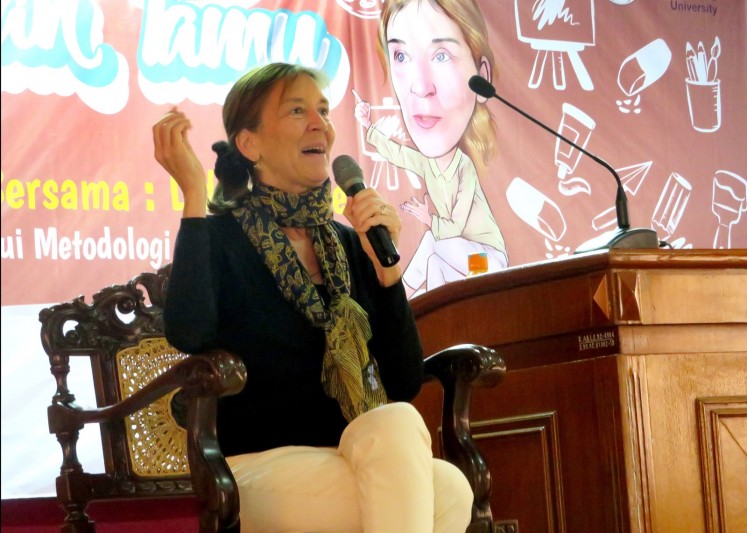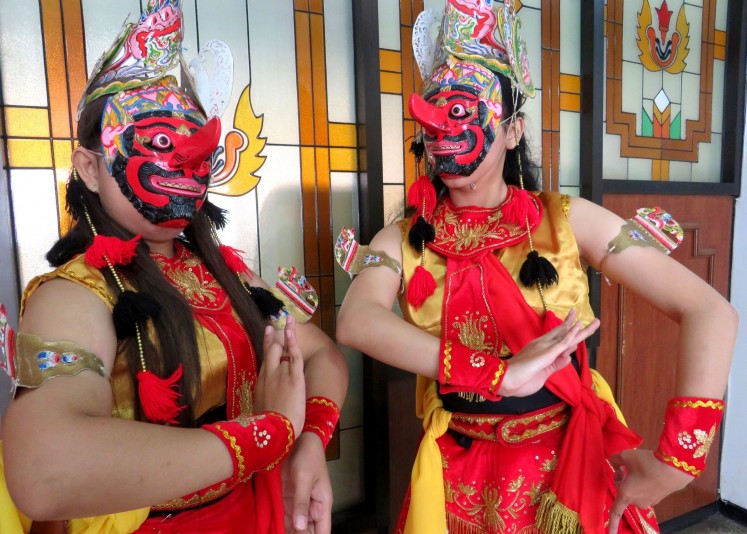Popular Reads
Top Results
Can't find what you're looking for?
View all search resultsPopular Reads
Top Results
Can't find what you're looking for?
View all search resultsTales of Panji, source of inspiration to learn meanings of life
Far from being overshadowed by foreign epics, Panji is an art form that has become a national treasure, from where Indonesians may learn the meanings of life.
Change text size
Gift Premium Articles
to Anyone
T
he story of Panji, a Javanese cultural hero whose full name is Prince Panji Inu Kertapati, has long been a topic of academic research.
Lydia Kieven, a German academic, conducted her research into Panji in numerous temples in East Java starting in 1996. Her doctoral thesis at Sydney University was later adapted into the book Menelusuri Figur Bertopi di Relief Candi era Majapahit (Following the Cap-Figure in Majapahit Temple Reliefs).
Lydia Kieven, a German researcher, conducted her research on Panji at numerous temples in East Java starting in 1996. She was a guest lecturer at Malang State University (UM) (JP/Nedi Putra AW)“I use a methodology that covers iconography, iconology and symbolism interpretation according to the facts from historical traces on temple reliefs,” said Lydia when speaking as a guest lecturer at Malang State University (UM) on Wednesday.
The topic of her lecture was “Analyzing the tale of Panji” using the methodology of art research.
Kieven thinks highly of the tale of Panji, as it is an example of a new style and creativity shown by artists, in response to art and literature in the Majapahit era. It is also distinguished by the fact that the story is not overshadowed by Indian epics the Ramayana and Mahabharata.
“It is classified as folklore, but it is sacred, due to it being portrayed on the reliefs on such a sacred place as a temple,” explained Kieven.
She went on to point out examples of reliefs carved on the walls of Penataran temple in Blitar, East Java. The tale of Panji is portrayed on the terraces of pendopo (Javanese gazebos), while reliefs on the main temple depict the stories of the Ramayana and Kresnayana, which originated in India and are related to the gods.
Panji is the guide who connects humanity with the realms of the gods.
“The tale of Panji itself focuses heavily on the romance between Panji and Candrakirana. It is about separation, a journey to look for each other and a reunification,” said Kieven. “However,” she continued, “there are many life values that can be extracted from the story, such as hard work and determination to achieve the goals of life.”
Kieven acknowledges different interpretations among researchers. Yet the differences are open to further discussion, making the topic material for interdisciplinary research to end up as academic and popular publications.
The researcher thinks the preservation of Panji is already on track, at least through the revitalization of the Panji tradition in Java. Performances of masked dance theater and educational activities such as workshops, seminars or cultural discussions have taken place, as well as international Panji festivals in many Indonesian cities.
The Topeng Bapang dance, performed as part of The Tales of Panji during a lecture by guest lecturer Lydia Kieven at Malang State University (UM) in East Java (JP/Nedi Putra AW)Read also: Panji, a shared legacy
“The legacy of Panji is embodied in new artworks based on tradition, and all the efforts to preserve this art have culminated in UNESCO listing it in the Memory of the World in 2017,” said Kieven, agreeing that Panji is a product of local genius that has spread not only around the archipelago but also to Indochina.
She thinks that at its core, ancient art forms could become the source of inspiration to learn about the meanings of life, more than merely a research topic.
“Get to know, understand, appreciate and maintain Panji to the point of transformation as a cultural identity, so that the reliefs on the temples are not merely backgrounds for taking selfies,” said Kieven. (mut)













